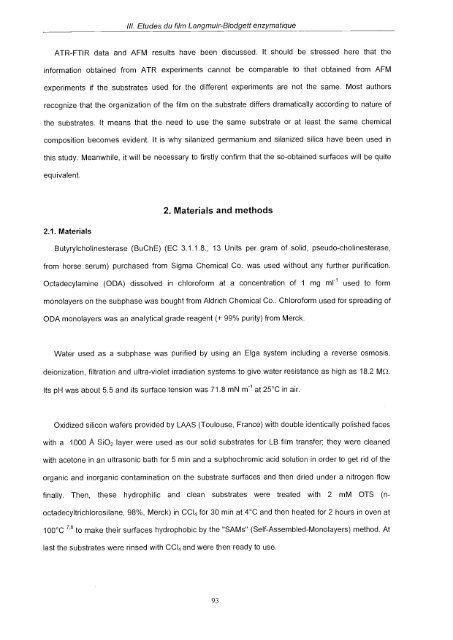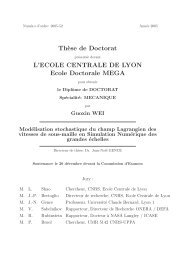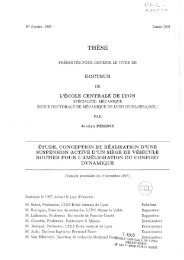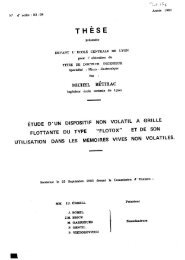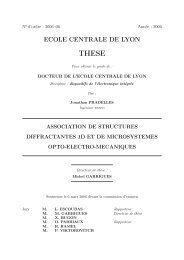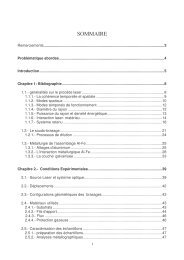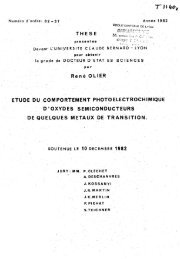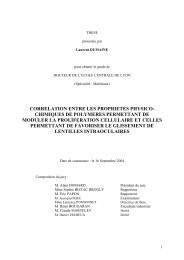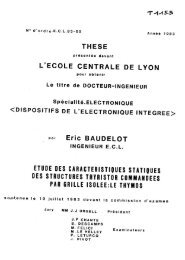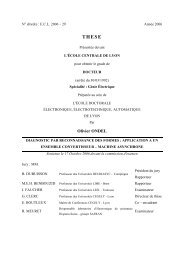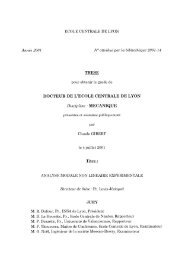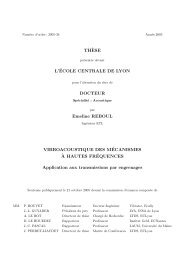Etude de différentes méthodes de biofonctionnalisation pour la ...
Etude de différentes méthodes de biofonctionnalisation pour la ...
Etude de différentes méthodes de biofonctionnalisation pour la ...
You also want an ePaper? Increase the reach of your titles
YUMPU automatically turns print PDFs into web optimized ePapers that Google loves.
III. <strong>Etu<strong>de</strong></strong>s du film Lan gmuir-Blodgett enzymatique<br />
ATR-FTIR data and AFM results have been discussed. lt should be stressed here that the<br />
information obtained from ATR experiments cannot be comparable to that obtained from AFM<br />
experiments if the substrates used for the different experiments are not the same. Most authors<br />
recognize that the organization of the film on the substrate differs dramatically according to nature of<br />
the substrates. lt means that the need to use the same substrate or at least the same chemical<br />
composition becomes evi<strong>de</strong>nt. lt is why si<strong>la</strong>nized germanium and si<strong>la</strong>nized silica have been used in<br />
this study. Meanwhile, it will be necessary to firstly confirm that the so-obtained surfaces will be quite<br />
equivalent.<br />
2. Materials and methods<br />
2.1. Materials<br />
Butyrylcholinesterase (BuChE) (EC 3.1.1.8., 13 Units per gram of solid, pseudo-cholinesterase,<br />
from horse serum) purchased from Sigma Chemical Co. was used without any further purification.<br />
Octa<strong>de</strong>cy<strong>la</strong>mine (ODA) dissolved in chloroform at a concentration of i mg mr1 used to form<br />
mono<strong>la</strong>yers on the subphase was bought from Aldrich Chemical Co.. Chloroform used for spreading of<br />
ODA mono<strong>la</strong>yers was an analytical gra<strong>de</strong> reagent (+ 99% purity) from Merck.<br />
Water used as a subphase was purified by using an Elga system including a reverse osmosis,<br />
<strong>de</strong>ionization, filtration and ultra-violet irradiation systems to give water resistance as high as 18.2 Mc.<br />
Its pH was about 5.5 and its surface tension was 71.8 mN m at 25°C in air.<br />
Oxidized silicon wafers provi<strong>de</strong>d by LAAS (Toulouse, France) with double i<strong>de</strong>ntically polished faces<br />
with a 1000 A SiO2 <strong>la</strong>yer were used as our solid substrates for LB film transfer; they were cleaned<br />
with acetone in an ultrasonic bath for 5 min and a sulphochromic acid solution in or<strong>de</strong>r to get rid of the<br />
organic and inorganic contamination on the substrate surfaces and then dried un<strong>de</strong>r a nitrogen flow<br />
finally. Then, these hydrophilic and clean substrates were treated with 2 mM OTS (nocta<strong>de</strong>cyltrichlorosi<strong>la</strong>ne,<br />
98%, Merck) in CCL for 30 min at 4°C and then heated for 2 hours in oven at<br />
100°C 7,8 to make their surfaces hydrophobic by the "SAMs" (SeIf-Assembled-Mono<strong>la</strong>yers) method. At<br />
<strong>la</strong>st the substrates were rinsed with Cd4 and were then ready to use.<br />
93


